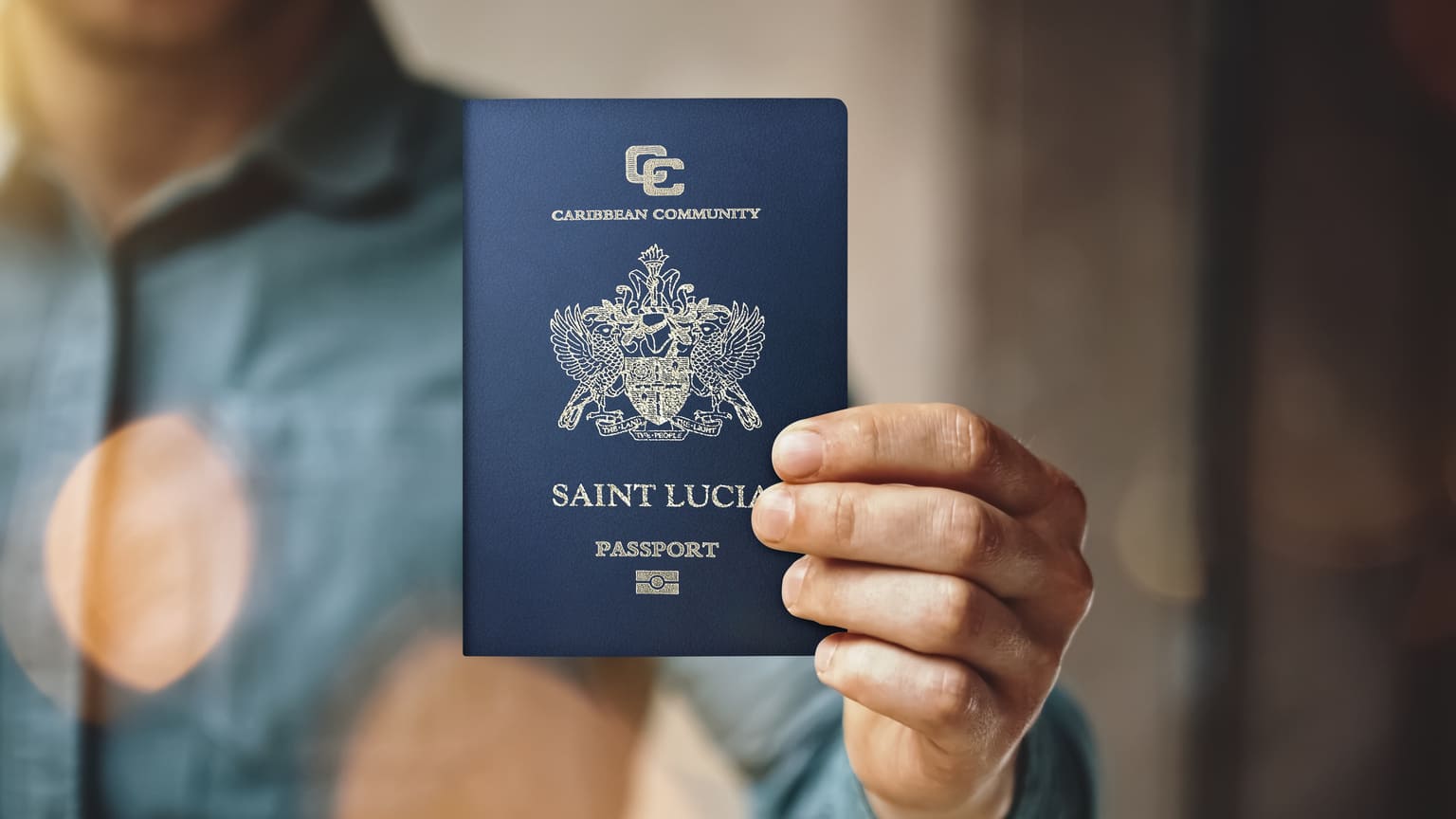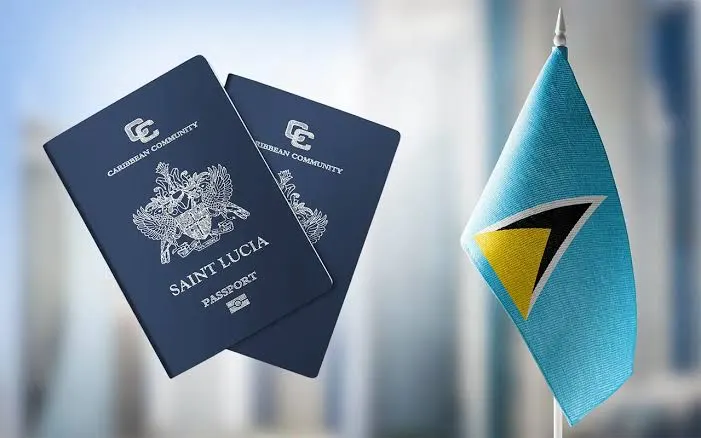Saint Lucia’s Citizenship by Investment Programme (CIP) has emerged as one of the country’s most significant non-tax revenue streams, attracting foreign investors with promises of a second passport and investment opportunities. Yet, as the programme grows in fiscal importance, questions linger about how the model affects local property markets and whether enough safeguards exist to protect citizens from being priced out of their homeland.
A decade of Citizenship by Investment
Saint Lucia launched its CIP in 2015, making it one of the newer entrants among other Caribbean countries offering economic citizenship. According to the website citizenship-by-investments, the programme allows foreigners to obtain citizenship through several investment routes: a donation to the National Economic Fund (NEF), purchase of government-approved real estate, investment in enterprise projects, or the purchase of government bonds.
The cost of citizenship varies depending on the investment option chosen, as well as the number of applicants included.
According to Guide to Saint Lucia, the most affordable route is a non-refundable contribution to the country’s NEF, which starts at US$240 000 for a single applicant or a family of up to four. Another option, as outlined by Best Citizenships, is through approved real estate investments, requiring a minimum investment of US$300 000 in government-approved properties. Applicants choosing this route must also pay a government administrative fee, which can reach US$50 000 for the main applicant.
A third pathway involves purchasing non-interest bearing government bonds, sometimes referred to as the National Action Bonds. According to the Saint Lucia Citizenship Investment official website, the bond option requires an investment of US$300 000, held for a minimum of five years, along with applicable processing and due diligence fees.
The programme also includes a fourth, less common, option called the enterprise investment route which requires at least US$3.5 million from a single applicant or US$6 million for joint ventures, according to Guide to Saint Lucia. This option targets large-scale business projects that generate employment and economic growth.
Early years of the programme saw a sharp rise in income from $70 million in 2020–2021 to $102.8 million in 2021–2022; a growth of approximately 46.9 per cent .
The programme, initially seen as a supplementary revenue stream, now represents a core element of Saint Lucia’s financial strategy, particularly as the island seeks to balance its post-pandemic recovery with its public debt.
Now in its ninth year, the programme has steadily evolved, tightening due diligence and aligning with other Organisation of Eastern Caribbean States (OECS) members to standardise pricing.
According to Citizenship by Investment News, the Prime Minister revealed during his presentation of the 2024-2025 Budget Statement for Estimates of Revenue and Expenditure that CIP contributed approximately $121 million to the economy during the 2023–2024 fiscal year. Of that total, $64.1 million was directed to the National Economic Fund, while $45 million was transferred to the government’s Consolidated Fund, as confirmed by Government of Saint Lucia budget documents.

Additionally, the sale of government bonds under the programme generated a further $39.5 million during the same fiscal period. The 2024–2025 Estimates of Revenue and Expenditure projected that CIP inflows would rise to around $75 million. For the 2025–2026 fiscal year, projections indicate a continued upward trend, with CIP-related revenue expected to reach approximately $85 million.
The CIP model and how it compares to other countries
Saint Lucia’s approach mirrors the broader Caribbean model of citizenship by investment. Investors can contribute to a national fund, invest in government-approved real estate projects, or purchase non-interest-bearing bonds. Each route has a minimum threshold, and all applicants must undergo strict background and financial checks.
According to CitizenX, Saint Lucia has tightened screening requirements in recent years, implementing enhanced Know Your Customer (KYC) and Anti-Money Laundering (AML) checks and extending application processing times. While applications once took as little as three months, processing now typically takes between six and ten months.
Regionally, other Caribbean countries operate similar programmes, namely Dominica, Antigua and Barbuda, Saint Kitts and Nevis, and Grenada. Dominica, for instance, launched its Citizenship By Investment (CBI) programme in 1993, making it one of the oldest in the world. Recent regional agreements under the OECS have sought to align the minimum investment threshold across member states, reducing competition and bolstering credibility.

Real estate and local concerns
One of the key features of Saint Lucia’s CIP is the real estate investment option where potential investors may only purchase properties within government-approved projects, a mechanism intended to maintain oversight and ensure that investments align with national development goals. Such properties must be held for at least five years before they can be sold; a rule designed to prevent speculative ‘flipping’, where investors quickly resell properties at higher prices purely for short-term profit rather than contributing to long-term economic development.
However, there is no evidence of explicit measures to prevent inflationary pressure on the wider real estate market. While approved-project restrictions control where foreign investors can buy, there are no legal caps on foreign ownership or guarantees of affordable housing for locals.
Lessons from Tobago
Other Caribbean territories, like Tobago, have taken stronger steps to protect local land ownership and affordability. Under the Foreign Investment Tobago Lands Acquisition Order (2007) as cited by Seajade Investments and SIP Real Estate, any foreign national wishing to acquire land must obtain a government-issued licence, regardless of the size or type of property. The government also established Designated Development Areas, where licences for foreign ownership are granted more readily, while purchases outside those zones are subject to stricter scrutiny. This approach allows the state to guide foreign investment into specific zones while protecting other areas from speculative demand, which are situations where buyers purchase land not for use or development, but simply to profit from future price increases, driving up costs for locals.
Foreign buyers must also demonstrate “good character,” provide proof of legitimate funds, and make purchases in foreign currency. These steps ensure transparency and reduce the risk of money laundering or exploitative speculation.
This is a marked contrast to its sister island Trinidad, where foreigners may buy up to one acre for residential purposes or five acres for commercial use without a licence, according to Mondaq and Builds and Buys.
Still, while the licensing regime gives the Tobago House of Assembly leverage over who and where foreigners can buy, analysts note that it does not directly guarantee housing affordability for locals. Rising demand in desirable coastal areas has continued to exert upward pressure on prices, despite regulatory oversight.
Finding a balance
Saint Lucia’s CBI programme has undeniably bolstered public finances, helping the island navigate economic uncertainty and fund social initiatives but it also raises a key policy challenge: balancing revenue generation with social protection.
However, as the programme continues to attract high-net-worth individuals seeking second citizenship, policymakers face the challenge of ensuring that local citizens benefit equitably. This includes addressing concerns about land accessibility and affordability. Tobago’s licensing system, which requires foreign investors to obtain a government-issued licence before acquiring land, serves as a model for regulating land ownership and protecting local interests.
As the island continues to attract high-net-worth investors seeking second citizenship, policymakers may face increasing calls to ensure that local citizens benefit equitably and that the country’s beauty and resources remain accessible to all.





When it’s all said and done, all the money will be gone, our passports undervalued, the poorer citizens, will be in an winnable competition with the more affluent citizens and the most disappointing thing is, we will be as deep in debt as before, with little to no accountability on who the buyers of our passports are, their investment plans, how much is collected , how it is spent, how and how much is left. The citizens of this country have a Right to Know. Other questions remain .Is there an end game to this program, considering our small size, our population, and the negative effects of the program ?